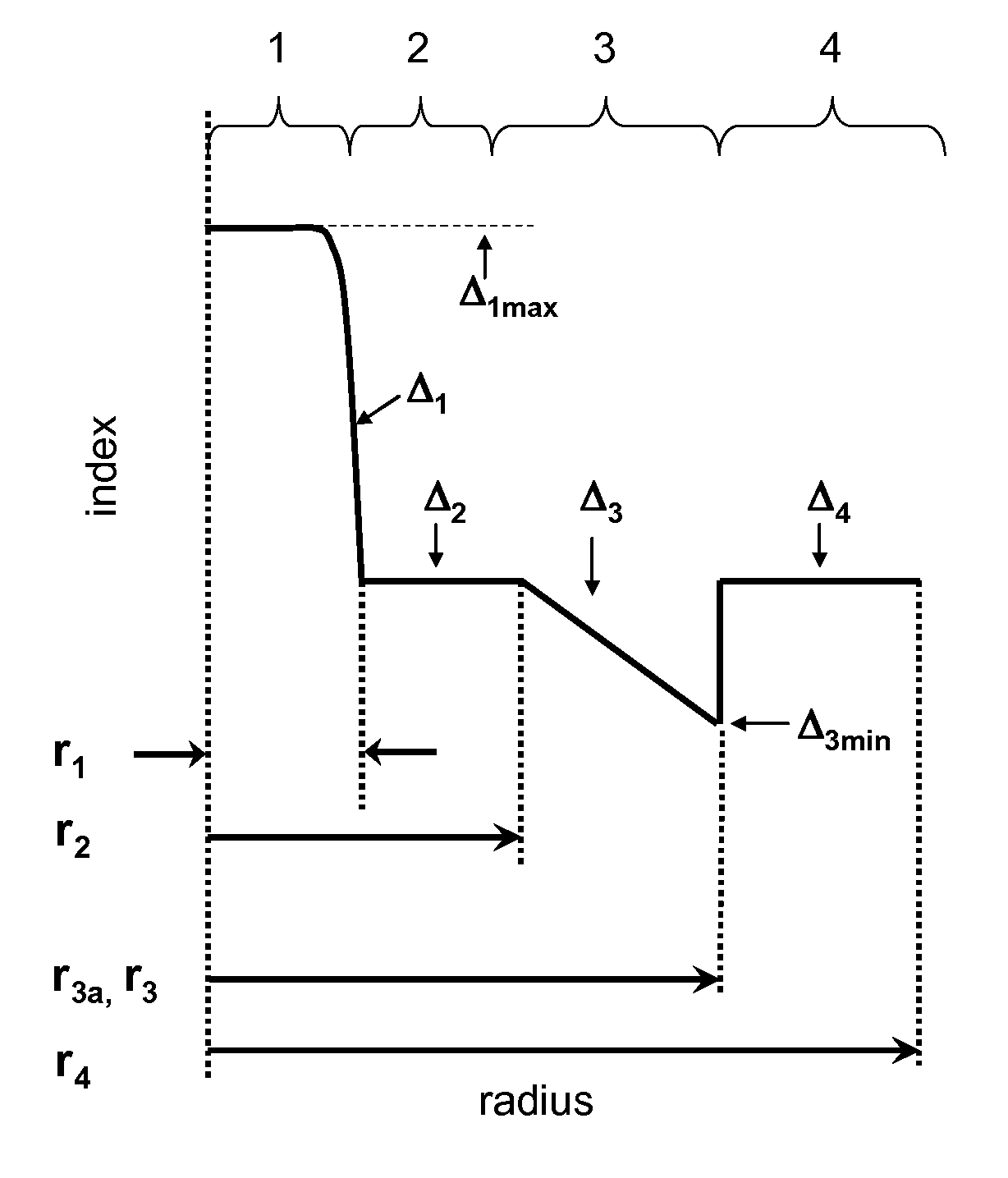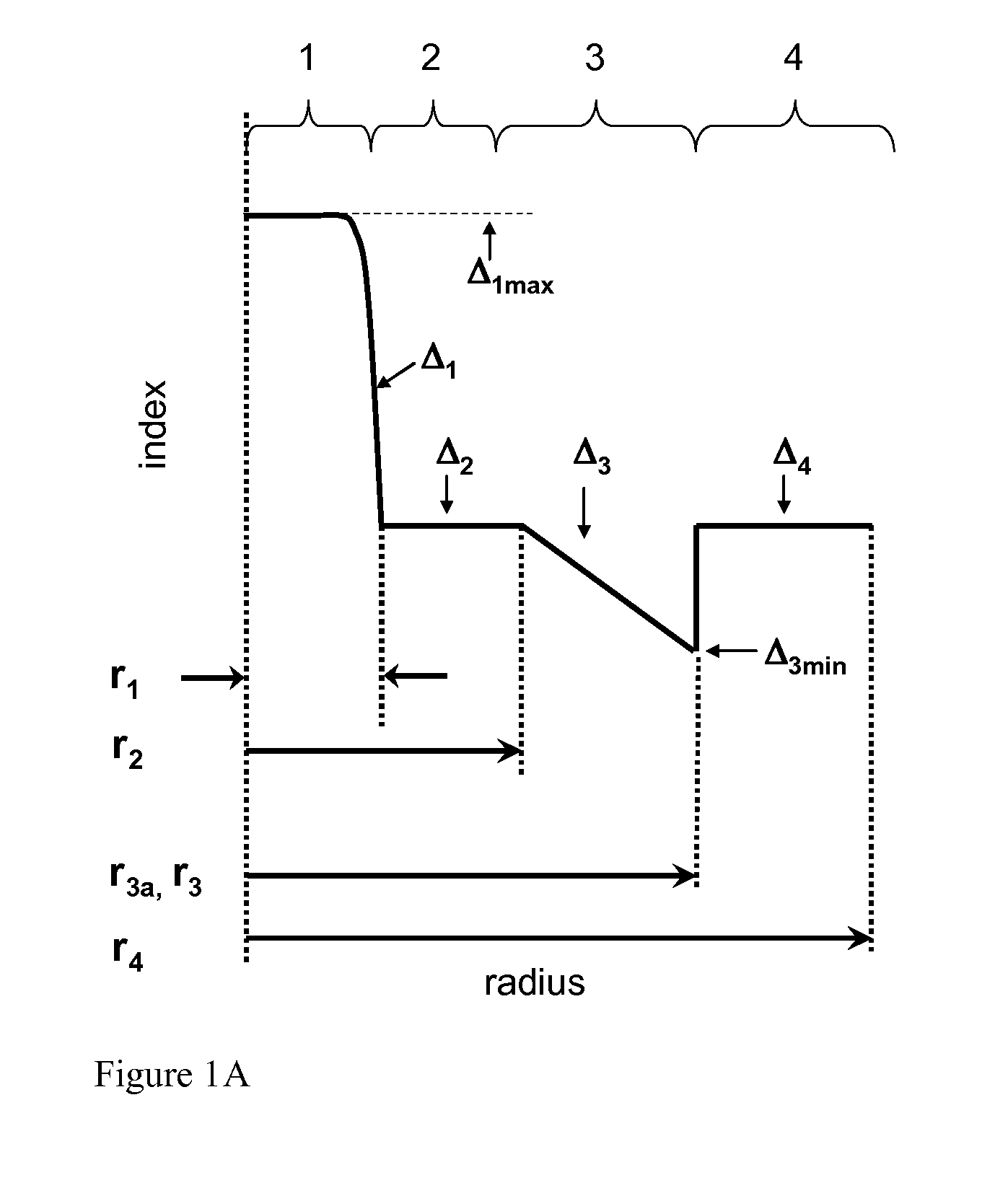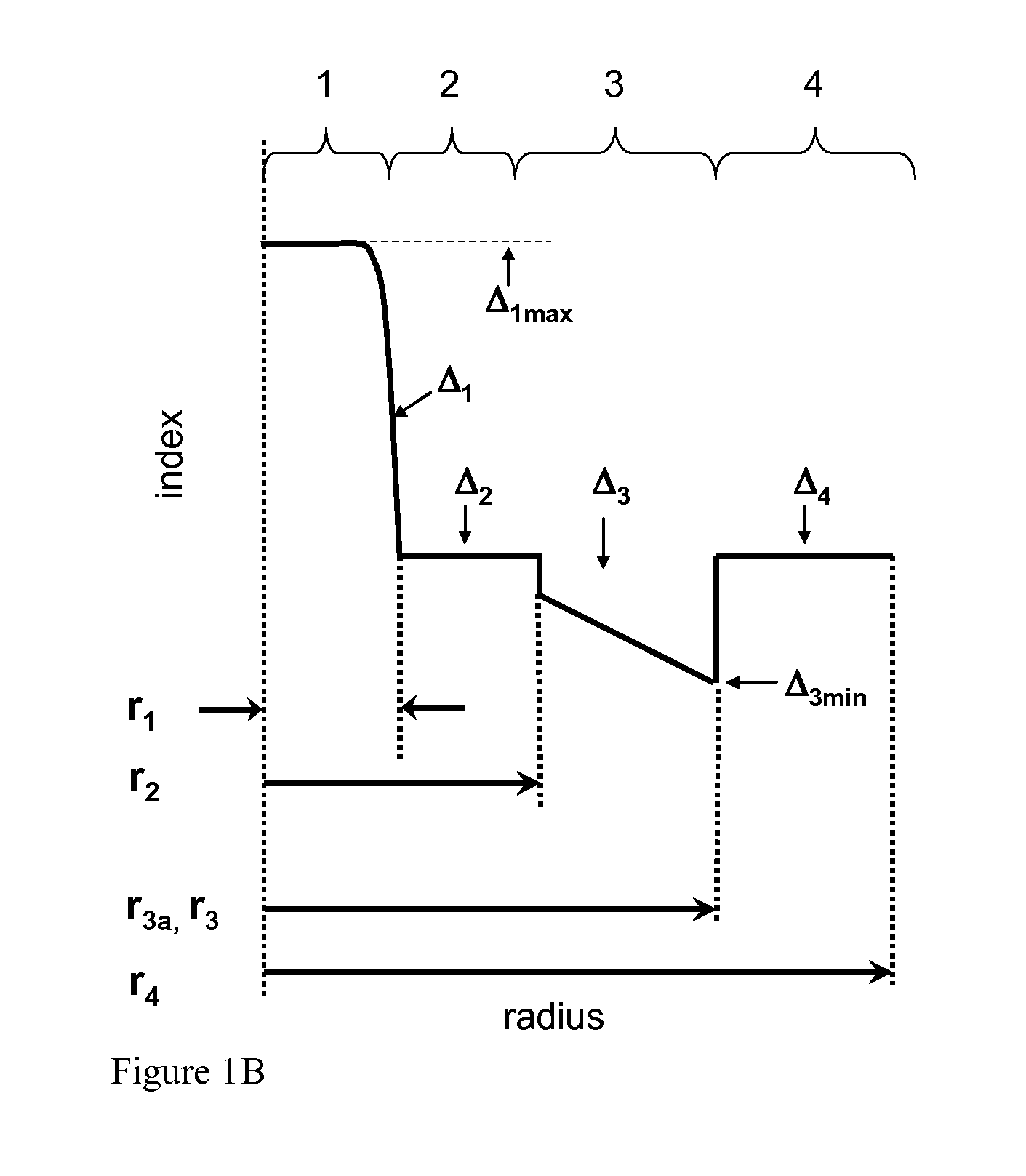Low bend loss optical fiber
a technology of optical fibers and low bend loss, which is applied in the direction of optical fibers with graded refractive index core/cladding, optical waveguide light guides, instruments, etc., can solve the problems of increased manufacturing cost, increased manufacturing cost, and increased manufacturing cost, so as to achieve low bend loss and macrobend performance. , the index in the second inner cladding region is reduced, and the performance is good
- Summary
- Abstract
- Description
- Claims
- Application Information
AI Technical Summary
Benefits of technology
Problems solved by technology
Method used
Image
Examples
examples 1-6
FIBER EXAMPLES 1-6
[0062]Tables 1A, 1B, 2A, 2B, 3-5 below list characteristics of modeled illustrative examples 1-6 and 8-27, manufactured fiber example 7, and those of the two comparative example fibers. In particular, set forth below for each example of Table 1A and 1B is the relative refractive index delta Δ1, alpha, and outer radius r1 of the central core region 1, relative refractive index delta Δ2 and outer radius r2 first inner cladding region 2, relative refractive index delta Δ3 and volume V3 of the second inner cladding region 3, relative refractive index delta Δ4 and volume V4 of the outer cladding region 4, which is calculated between inner radius r3 of outer cladding region 3 and a radial distance of 30 microns, and a moat volume ratio.
TABLE 1AComparativeExemplaryExemplaryExemplaryExampleembodimentembodimentembodimentParameter1123Δ1max (%)0.350.350.350.39α2020202r1 (microns)4.04.04.05.4Δ2 (%)0.000.000.000.00r2 (microns)9.57.67.66.6Δ3 (%)−0.28−0.40−0.40−0.40r3 (microns)16...
PUM
 Login to View More
Login to View More Abstract
Description
Claims
Application Information
 Login to View More
Login to View More - R&D
- Intellectual Property
- Life Sciences
- Materials
- Tech Scout
- Unparalleled Data Quality
- Higher Quality Content
- 60% Fewer Hallucinations
Browse by: Latest US Patents, China's latest patents, Technical Efficacy Thesaurus, Application Domain, Technology Topic, Popular Technical Reports.
© 2025 PatSnap. All rights reserved.Legal|Privacy policy|Modern Slavery Act Transparency Statement|Sitemap|About US| Contact US: help@patsnap.com



